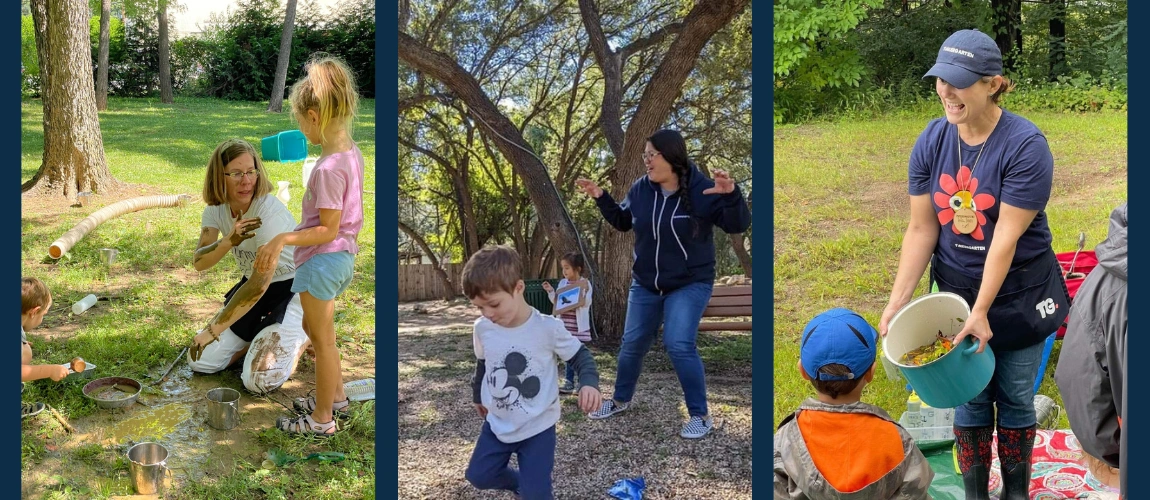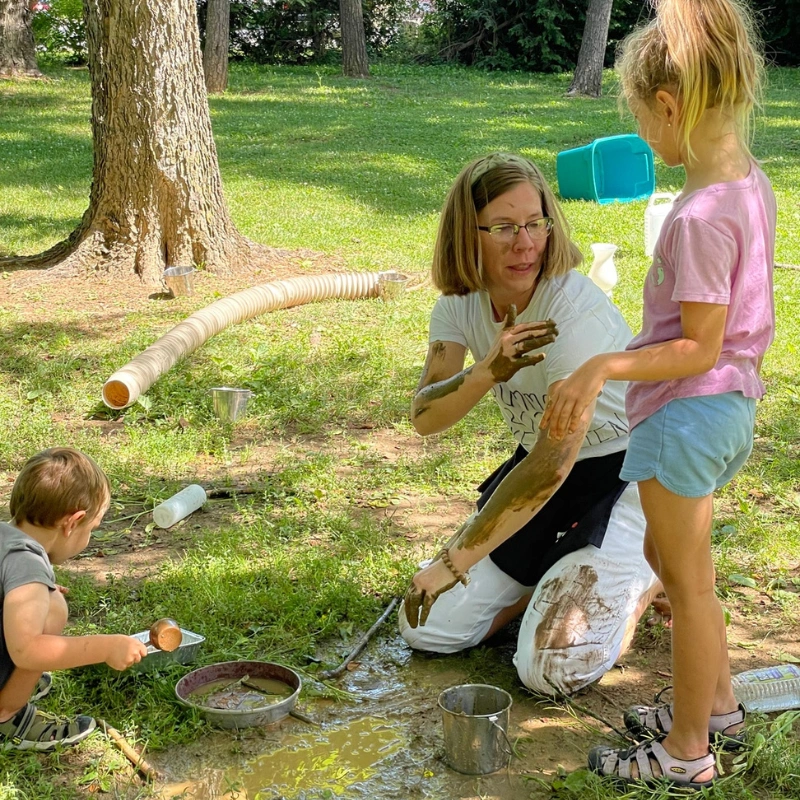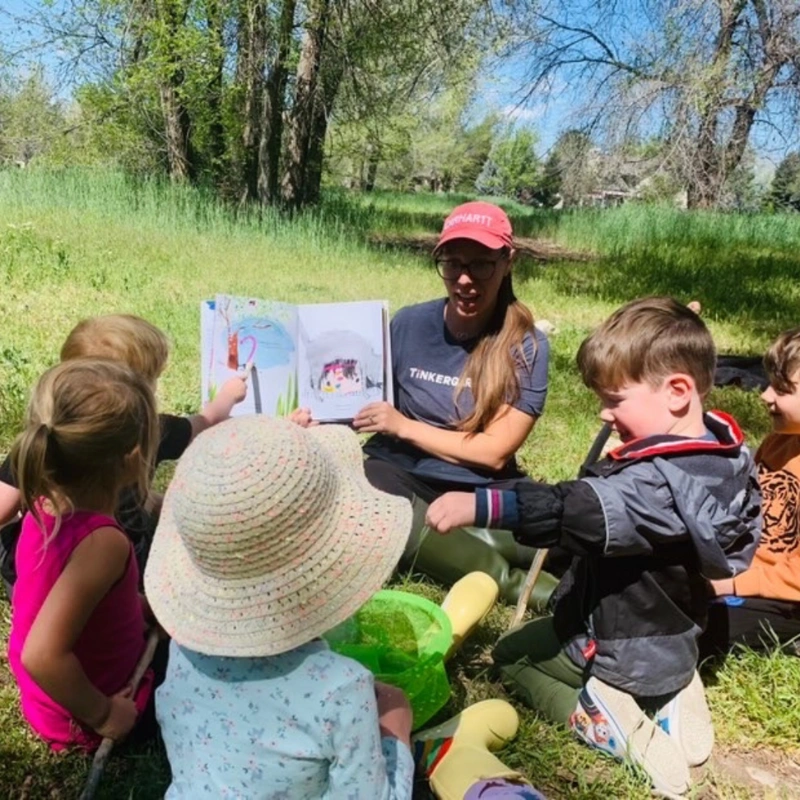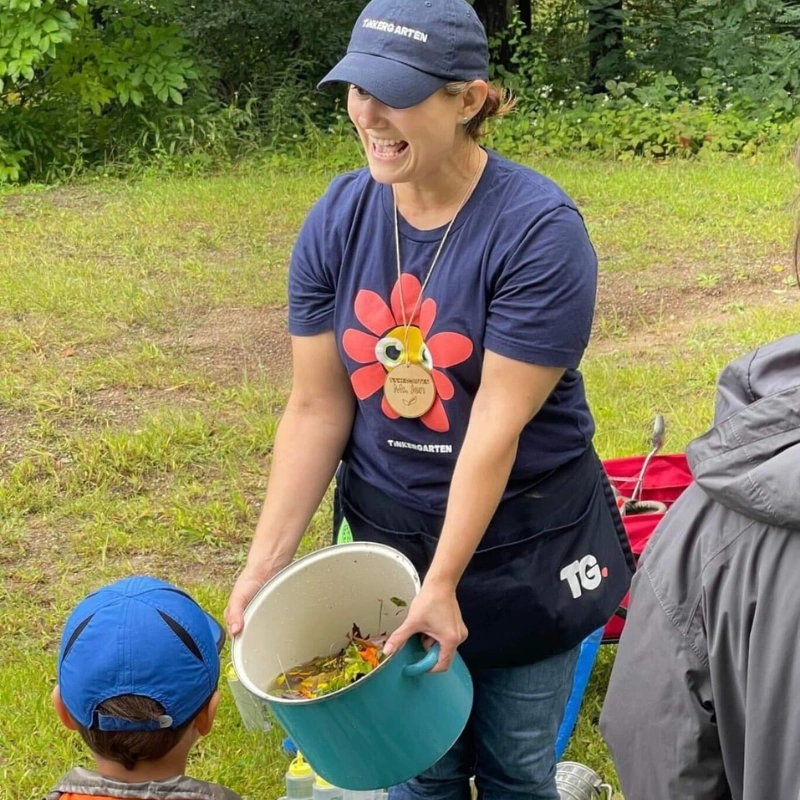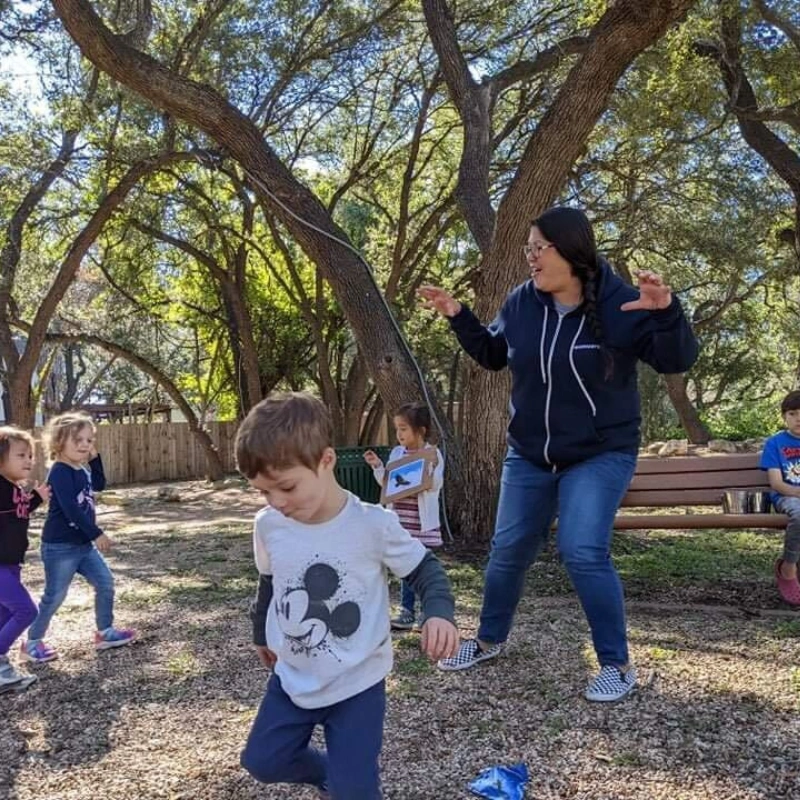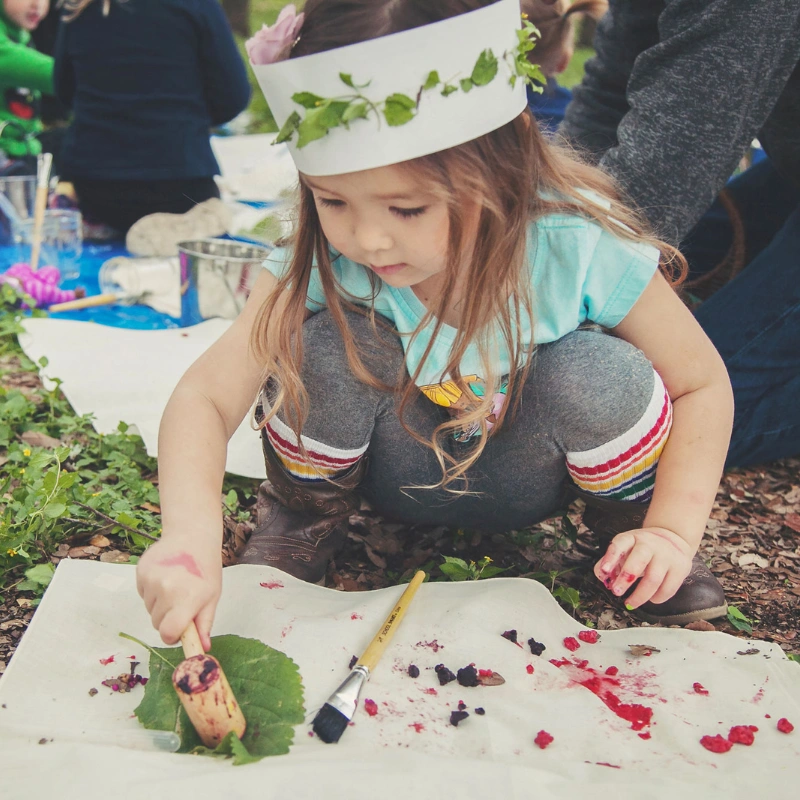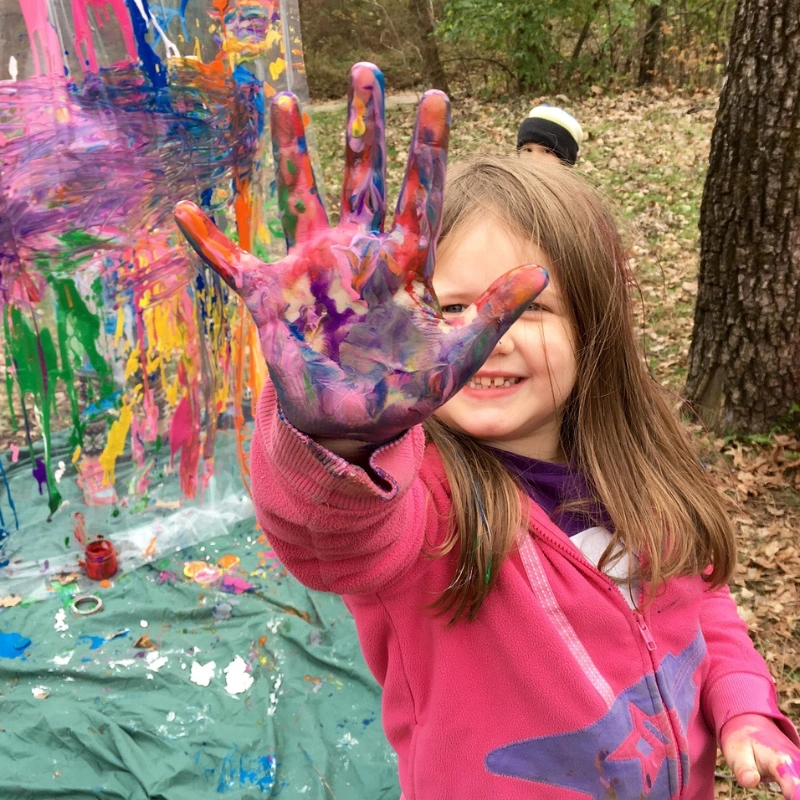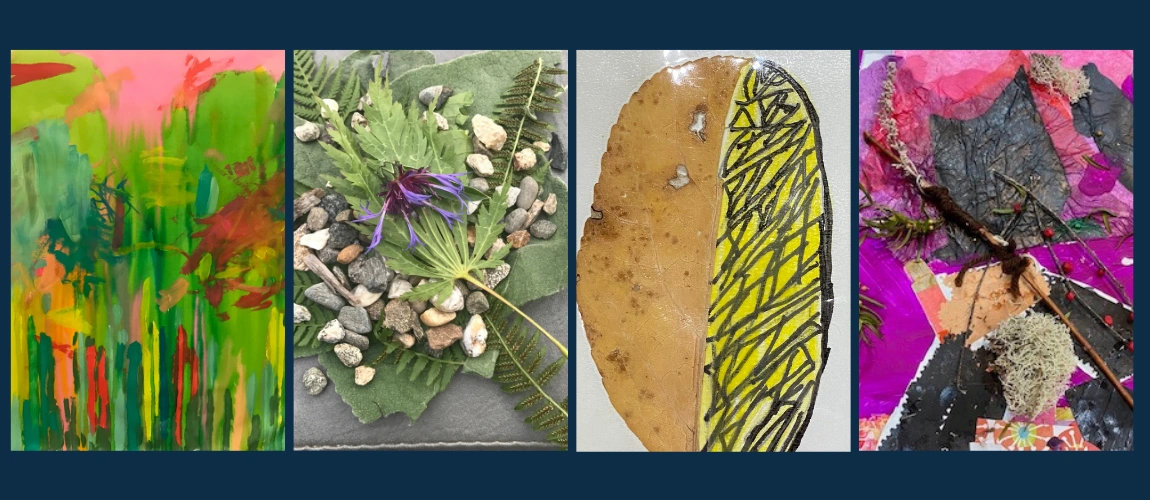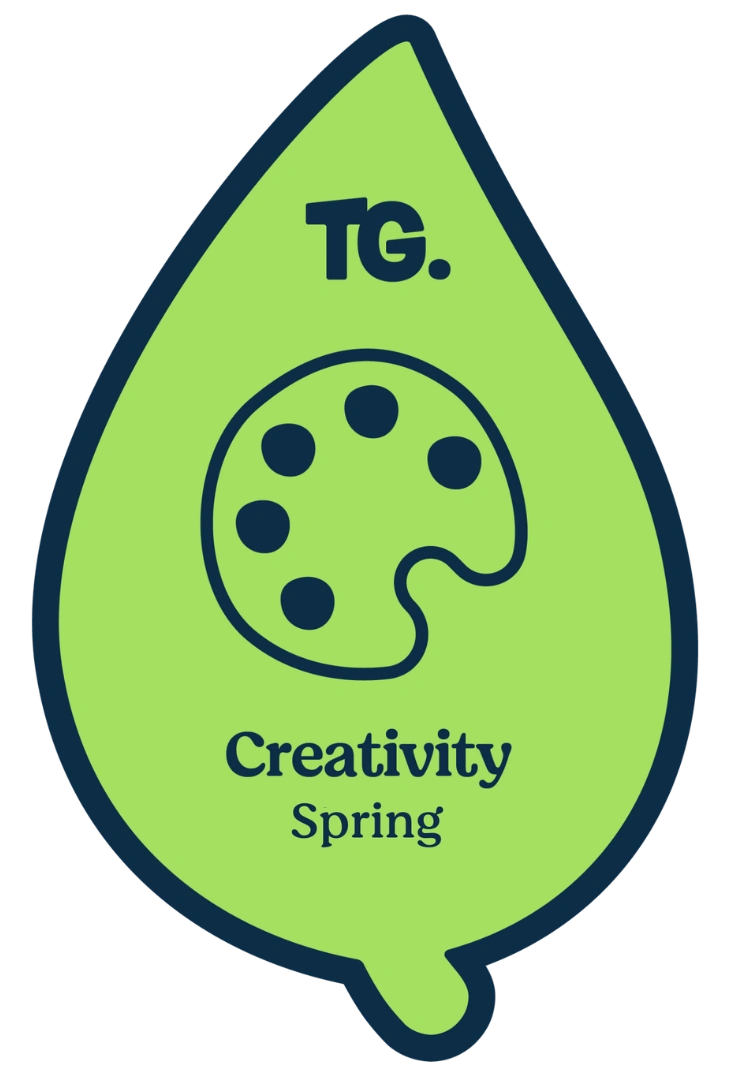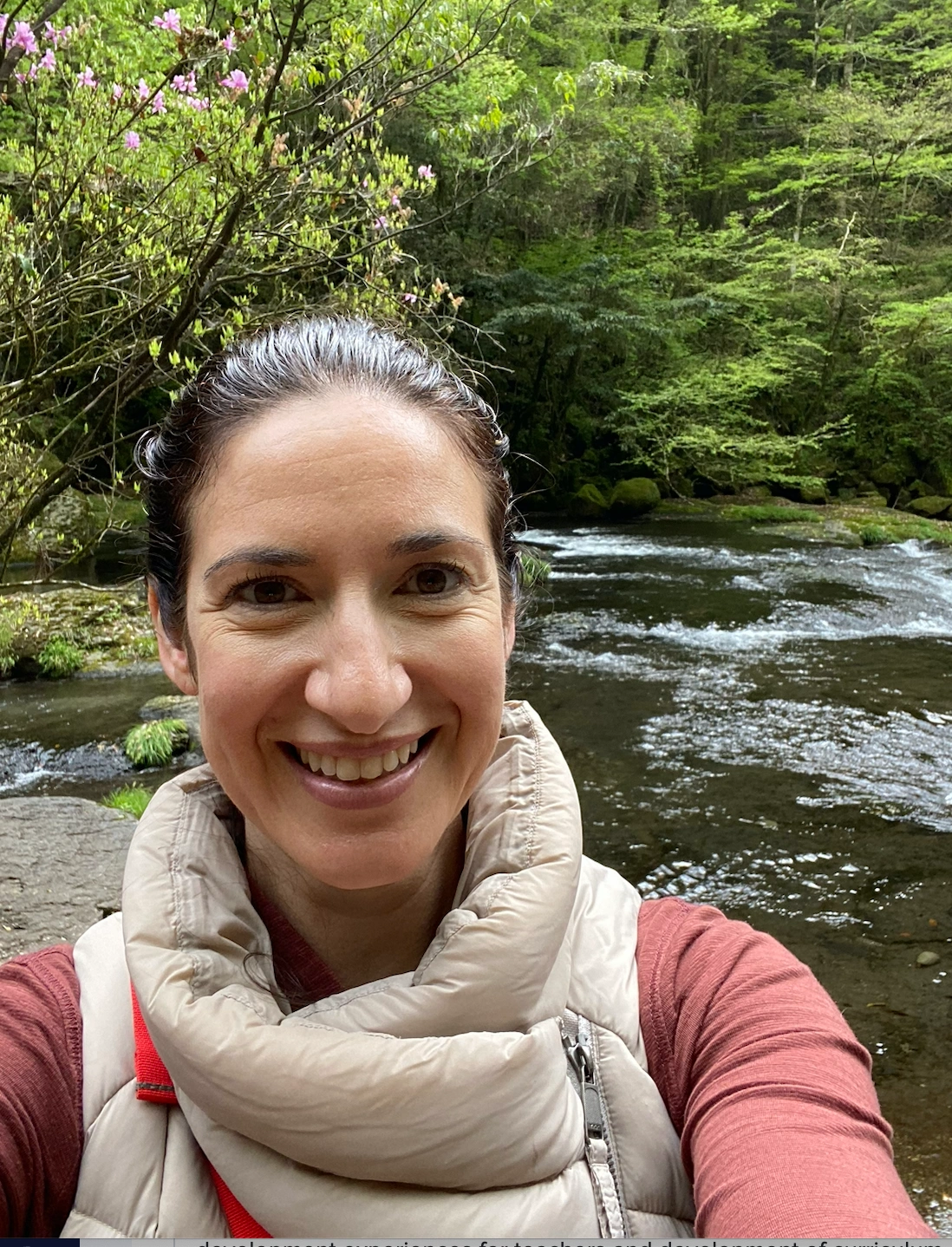Teachers and families across the country are preparing to use our Spring 2024 Creativity series in their classrooms, community green spaces and homes. This special set of lessons are designed to help kids develop creative mindsets and strategies that they can use to invent new things, solve problems, express their ideas and feelings, and to nurture relationships.
Though kids are born with the building blocks of creativity, it's hard to stay creative as we grow in a world that values the “right answer.” At Tinkergarten, we know that the more creativity-boosting experiences kids have in the early years, the better chance they’ll carry a creative mindset into adulthood.
In addition to a curriculum designed to boost kids’ creativity, we can all develop teaching strategies that boost creativity all year round. We asked Tinkergarten Teachers to share their favorite ways to boost kids’ creativity. Read on to learn more about their top 7 tips. We hope they can inspire you to nurture creative thinking with the kids you love and teach.
#1: Make a plan for messy play that works for you.
The freedom and inherently open-ended nature of mess-making is undeniably wonderful for developing kids’ creativity. Yet it can be hard for us adults to fully embrace the mess. To make messy play work on your terms, have a plan for when and where messy play can take place.
Virginia-based TG Teacher Ashley Clevenger says, “With messy play, I think of class time as a safe space for getting messy and that recognizing one's own limitations can be celebrated.”
Preparing for mess-making and easy clean-up can also help adults embrace the unbridled creativity of messy play without worrying too much about the aftermath, whether that happens in a classroom or home space.
Utah-based Tinkergarten TG Teacher Shannon Williams likes to make sure kids and grown-ups feel prepared before a particularly messy play session. “I encourage everyone attending to “dress for mess” and bring a change of clothes.”
It also helps to remember that since each of us has our own threshold for sensory stimulation, messy play may not look the same for everyone. Connecticut-based TG Teacher Jennifer Drechsler helps kids and caregivers identify their “mud mindset” and offers ways to make messy play feel manageable and beneficial for all learners. She says, “I always offer "tools" to help those who have a difficult time touching mud, dirt, paint, etc. and encourage guides to not only notice their explorer's preferences, but their own.”
Read here for more ways to make messy play work for you and the kids you love and teach.
#2: Model flexible thinking.
Flexible thinking (also called cognitive flexibility) is critical to both creativity and problem solving and requires the ability to shift one’s attention as the demands of the environment or task change. When you find yourself needing to adjust plans, make a point of celebrating with kids that you were able to stay flexible and respond to challenges in new, innovative ways.
Texas-based TG Teacher Erika McLemore says, “I like to narrate as I’m having my own flexible thinking and creative moments to model it for kids (and their grownups learning with them!). “Wow! Seeing you wiggle and bounce just gave me a fun, new idea! Should we try it?” or “I had the idea to ____ and as I was exploring, it gave me a NEW idea to try! I wonder if you’ll have ideas to try as you play, too.”
Read here for more ways to help kids develop cognitive flexibility.
#3: Resist the urge to intervene.
It can be hard to resist the urge to direct, guide, or model for kids as they play. However, when we let kids be their own creative directors and welcome them to lead their own play, take risks, experiment, and adjust to challenges, creativity can truly flourish.
Caitlin Teplicky, a Tinkergarten Teacher in Utah shares, “When I have the urge to intervene in my own kids' play or creation process, I find it is helpful to get curious about why. Is it because they're being unsafe? Are they going to get too messy and we need to leave in 10 minutes? Or is it because I feel uncomfortable that they aren't creating the way I envisioned? Getting curious can help me pause, breathe, and determine how to best support them in that moment instead of immediately reacting.”
#4: Focus on the process, not the product.
One way to avoid overdirecting kids’ play is to try to focus on the process of kids’ creative pursuits rather than the final product. Our adult brains are accustomed to working efficiently, getting results, and creating a final product. For kids, it’s the making of something that matters, not the final product. To support the creative process, invite kids to tell you about their creations and celebrate their efforts and the choices they make in materials and techniques.
TG Teacher Caitlin Teplicky says, “I like to ask open-ended questions and use "I notice" statements about kids' artwork. "I notice you added a yellow circle! I love how bright it looks. Can you tell me about that part?" (Instead of, "I see you drew a sun.")”
And, if you feel inspired by the idea of a final product, try it yourself! You can always join in and play alongside kids. Shannon Williams shares, “I always encourage grown ups who are passionate about a final product, to dive in on their own. They get to focus on a product, and their child gets to observe them doing something tricky and focus on the process.”
#5: Offer kids the chance to tinker with loose parts.
Divergent thinking—the kind of thinking that we do when we open our minds and explore all possibilities in a given situation—is an essential creative thinking skill. Offering kids opportunities to play with loose parts and recycled materials opens up endless possibilities for how they can make, build, experiment, imagine, and invent.
California-based TG Teacher Laura Lee shares, “I like putting out materials as loose parts along with minimal prompt such as “I wonder what you could do with these? This helps to boost creativity as the children can wonder for themselves “what COULD I do?”, but I feel that it also helps manage my own expectations of a certain product being the outcome.”
To help kids fully immerse themselves in divergent thinking, play “It’s not a ____, it’s a _____.” Hold up a natural or everyday object and ask, “Do you know what this is?” Follow up with, “Hmm...This is not a stick, it’s a....” Pause to see if kids can invent a new use for it. Or, share a few ideas of your own to get things rolling.

#6: Get inspiration from other artists.
Introducing kids to the work of artists who use different mediums and techniques helps kids to see the infinite possibilities for how and what they can create.
TG Teacher Ashley Clevenger shares how she helped to inspire her own explorer through the work of other artists. “I started to show lots of examples of different art forms and modeling various techniques. At first, he would strive for perfection but once I told him we were simply following the techniques (or using a certain material) but he could do whatever he wanted it seemed to be more supportive.”
Try our Mark Your Mark DIY Activity to help kids take inspiration from the work of Japanese artist Yayoi Kusama and create dot art using objects from nature. Try our Frida's Flowers activity inspired by the life, work, and nature-love of Frida Khalo. Or, try one of these four creativity-sparking activities for kids, all inspired by the work and techniques of African American artists.
#7: Get out and play this spring!
TG Teacher Caitlin Teplicky notes, “I find it SO much easier to support this type of creative, messy play in class or in nature versus in my own home. This is a huge reason I love Tinkergarten and encourage families to try it!”
Search our Tinkergarten Teacher directory to find a teacher who is offering our Creativity lessons near you. Or, become a member of Tinkergarten Home and follow along with our Creativity curriculum on your own with the support of video lessons, printable resources, and more.
Want to teach essential skills like creativity in your homeschool, classroom, or community? Learn more about how teachers can use Tinkergarten to do the kind of teaching that sparks wonder and joy for the kids they serve, all while being a part of a supportive and engaging professional community.
